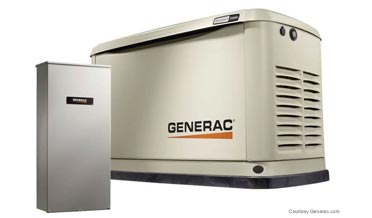4 Benefits of a Whole-house Backup Generator
Reasons You Need a Whole-house Backup Generator
If you are considering a Whole-house Backup Generator, but need a little more information to aid your decision-making, here are four very good considerations to help you make a decision.
- A confident solution when the power grid is unreliable. Homeowners are experiencing increases in utility costs but very little of that money is used to replace an aging electrical power grid. Weather patterns are changing. Both extreme cold and extreme heat lead to power outages. Storms, both localized thunderstorms and massive hurricanes can cause power outages that last for days and weeks.
Whole-house Backup Generators provide emergency power for these situations and more. It is an affordable solution to help protect your family from a number of threats and keep the lights on when the lights go out.
- They come in various sizes and can be customized to meet your need.
- Smaller, less expensive generators can power priority circuits that keep major appliances and devices powered. This avoids the loss of food in refrigerators and freezers. This also keeps the AC and essential lighting circuits powered.
- Larger generators can service the entire house, powering phones, computer systems, and even the washer/dryer.
Lighting candles can be reserved for ambiance situations and should not be necessitated by the loss of power.
- Whole-house Backup Generator activates automatically when the power goes out. The fuel supply is already delivered. The sensors acknowledge the loss of power and within seconds the generator springs to action, shutting off the connection with the power grid and sending electricity to priority circuits. A backup generator is ready 24-7, in all types of weather.
Portable generators take time to bring out of storage, set up outside—potentially in a bad storm, running extension cords over potentially wet ground to various appliances and devices. Preparing a portable generator is generally done in the cold or heat, often while it’s raining, and often in the pitch dark. Of course, a portable generator will require adding fuel frequently, usually in very bad conditions.
A backup generator is a much better choice.
- Backup generators are inexpensive to operate. The price of generators has come down and is more energy-efficient than earlier models. The generator is connected to a natural gas or propane gas utility supply system. The power goes out and the backup generator comes on almost simultaneously.
In comparison, portable generators require a supply of fuel to be kept on hand and to replenish the generator repeatedly. Portable generators are also less fuel-efficient and will burn through the fuel in the tank quickly. When that supply is exhausted, the fuel will need to be replenished and it might not be readily available.
Interested in a Whole-house Backup Generator?
Our four decades of experience as a Houston Electrician and contractor AirPro Houston provides you with the skill and expertise to help with Whole-house Backup Generator selection and installation in your home and business.
We have financing options available with great options with up to 72-month terms with approved credit. Call us today at 281-880-8805 and let us partner with you for all of your electrical repair and installation needs.
